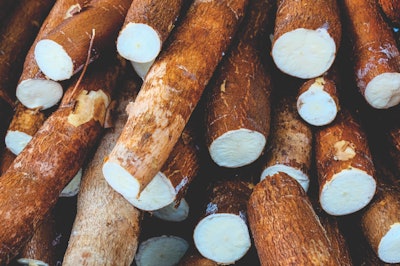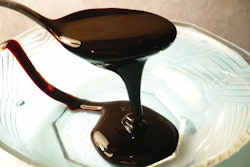
Thailand is the largest exporter of processed cassava chips and pellets
The recent increase in corn prices worldwide has forced feed producers to search for alternative energy sources.
Cassava (Manihot esculenta) is such a commodity that is being traded increasingly more in southeast Asia, where Thailand remains the largest exporter of processed cassava chips and pellets.
Processed cassava is a rich source of starch, containing about 70% and little else in terms of other nutrients. Nevertheless, it has a main drawback in that the raw plant root contains enough cyanogenic glucosides to cause severe problems and even death. Luckily, cassava is treated to remove most of these harmful compounds. The whole tuber contains as much 400 mg/kg hydrogen cyanide (HCN), with the peel containing as much as 800 mg/kg. The leaves are even richer in this compound, containing up to 1,500 mg/kg. Finally, there are several varieties of cassava, ranging from 75 to 1,000 mg/kg HCN. With proper processing, levels can be reduced by as much as 90%. For example, raw pulp contains as much as 200 mg/kg HCN, whereas these levels are reduced to 31 and 27 mg/kg, by oven-and sun-drying, respectively. Laboratory testing, and knowledge of origin and variety are tools necessary for using cassava effectively.
Products relatively free of HCN can replace corn without any problems, as long as the formulas remain well balanced for all other nutrients. This is true for monogastric species as ruminants are more sensitive to HCN poisoning. Finally, when it comes to egg pigmentation, it should be noted that whereas corn is relatively rich in pigments, cassava contains none.
It is expected even more cassava to be produced in the coming years as corn prices are not expected to ease any time soon. Thus, it is imperative for feed professionals to become accustomed to the idiosyncrasies of cassava as soon as possible.
















